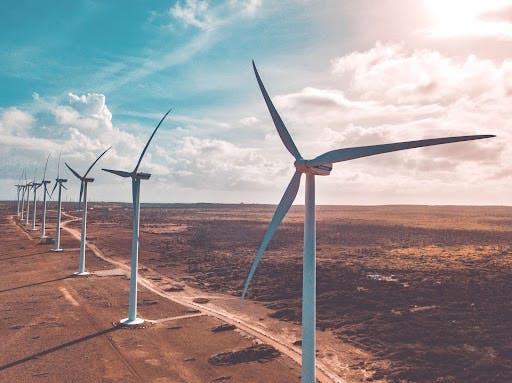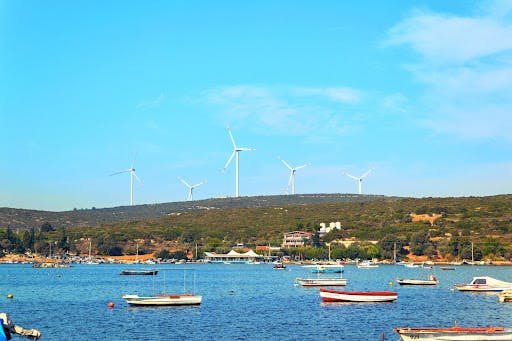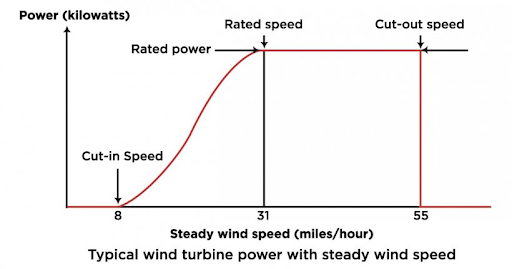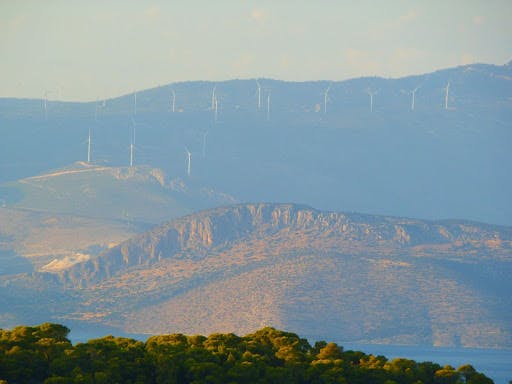Wind Power Project Finance: Funding Your Onshore Wind Project
14 Apr 2023

Developing an onshore wind project can be a complex endeavour requiring substantial capital and planning. In this guide, we will explore the various wind power project financing options available for onshore wind projects and provide practical advice on how to secure financing for your renewable energy project development.
We will also explore the operational side of the project: providing tips about the different planning permissions to consider while looking for funding. This guide will equip you with the knowledge and tools necessary to start your journey into onshore wind project development.
Benefits of Developing a Wind Project
As the world makes a shift towards renewable energy sources, the wind energy industry is booming. It is a very attractive industry for developers and investors alike due to the intricacies of how this market works.
According to a December 2022 report by the International Energy Agency, renewable power capacity is set to grow by 2.400 gigawatts from 2022-2027.
To put this in perspective, China’s entire current power capacity is 2,420 GW, so this addition of renewable energy would be massively helpful in phasing out fossil fuel sources of energy. Wind capacity is also set to double during this period with wind and solar making up over 90% of this growth.
The key incentive for developers continues to be revenue generation from the sale of electricity generated, followed by potential profits from selling the wind farm however, it is also a great time for wind project development because of government policies. Many governments are making energy security a priority given the 2022 global energy crisis (see our guide on ‘Italy’s renewable Energy Landscape’ for examples of this). This means that governments across the world on the local to national level are currently offering significant financial incentives for wind farm developers.
Sale of Electricity
One of the primary ways to generate revenue from an onshore wind project is through the sale of electricity. The electricity generated by the wind turbines can be sold to government organisations, utility companies, or directly to businesses and consumers. Another option is to enter into a power purchase agreement (PPA) before starting to build the project in order to ensure a flow of revenue.
The revenue generated from the sale of electricity will depend on a range of factors, including the size and capacity of your project, inflation indices, and the length, rate and terms of any power purchase agreements (PPAs) you have in place.
Wind is considered one of the most efficient & reliable sources of renewable energy due to its ability to generate electricity over 90% of the time, including times which are out-of-phase of typical solar energy production (which is the cheapest source per kWh, but also limited by generation timings).
Most on-shore utility wind turbines have a capacity of 2-3 MW and can produce an average of 6,000 MWh of electricity per year. This could represent revenues of £2 to £4 million annually but will depend on your project’s specific structure and performance.
Sale of Project
In addition to revenue from the sale of electricity, there may be opportunities to generate profits from the sale of the wind energy project itself. This can include selling your project to a third party, such as an infrastructure fund or a larger energy developer.
The value of your project will depend on a range of factors, including the size and capacity of the project, the stage of development, and market conditions. Projects in later stages will generally sell for more, but this means that many of the upfront costs will already have been paid for by the developer - the selling stage will depend on the developer’s strategy. In any case, this means that the sale of a wind farm to a larger developer or investor can turn great profits for the project owner.
For more information on selling your wind project, take a look at our renewable energy project marketplace for more information.
Government Incentives
The United States Department of Energy (DOE) offers tax rebates for wind energy projects. Larger utility-scale projects can elect to receive either tax rebates on the value of the facility or on the electricity produced.
Developers can choose between a 6-30% tax rebate on the total size of the facility or a 0.5-2.6 cents per kWh rebate on the electricity produced for 10 years. The size of the rebate will depend on the labour standards used to build the project. Tax rebates are also available for smaller-scale residential projects.
The DOE also offers funding in the form of loans for large-scale projects. They have $4.5 billion in loans to give out under the Renewable Energy and Efficient Energy Projects solicitation for market-ready projects. Currently, they are sponsoring 4 commercial-scale wind projects with $1.69 billion in loans.

Different Types of Wind Projects
In today’s world, it is generally agreed upon globally that bigger wind turbines are more effective at producing electricity, though smaller ones are also important. This is because there is a non-linear relationship between the turbine radius and the area of wind that passes through it. More on this below. Smaller turbines for residential or industrial purposes where the electricity generated is only intended to power 1 house or small building, a smaller-size turbine will be sufficient. In this case, the wind turbines are generally not connected to the grid and the electricity produced will be used directly by its consumer. These smaller, stand-alone turbines are generally less than 50kW in rated capacity, but some ranging as large as 250kW are still considered small given their aims of producing energy directly for an intended user. With small turbines, backup energy sources may still be required depending on the user’s consumption needs. However, it is often easier to quickly build these smaller, stand-alone turbines in terms of planning permissions as well as financial considerations.
Utility-Scale Projects
Wind turbines for utility-scale projects are generally quite large and often found in groups creating a wind farm. These turbines can produce massive amounts of power - some have daily capacities allowing them to generate enough electricity to power a house for 1 year.
Over the past 10 years, there have been significant improvements in the technology of wind turbines leading the wind industry to become the highest electricity-generating industry in the EU in 2021 as well as other parts of the world. The physical size of the blades on wind turbines has more than tripled from an average of 35 metres to 140 metres over the past 10 years, allowing for improved productivity and efficiency.
Why so big, you might ask? Well, basic maths relies on something we were all taught back at school. Think of the area of air that passes through a wind turbine as a circle. A circle’s area is measured as πr^2. That squared bit is the key - the area of air covered by the turbine is proportional to the square of the radius.
So if you double the radius, you have access to 4 times the area of air (and with it, the opportunity to extract kinetic energy from 4 times the volume of passing wind). Increase size (and materials required) by 10, and you can access 100 times the volume of wind.
There are other mathematical complexities to consider which do curb the economies of scale eventually, but you can see how the maths here gets a developer excited very quickly.
Within the realm of larger wind turbines, there are also different types and models of turbines. Both horizontal and vertical turbines exist, though studies of each type of turbine have shown that vertical turbines are more costly and less efficient. This explains why the classic idea of a wind turbine is the horizontal version. With utility-scale wind farms, the electricity generated is usually connected to the grid, or in some cases stored for future use. The sale of this electricity then drives the revenue generation for utility-scale wind farms.
Difficulties of Generating Funding for Wind Energy Projects
Generating funding for a utility-scale wind farm may be difficult due to the risk associated with early-stage projects. As with most renewable energy projects, both the early-stage costs and risks are fairly high.
This risk stems from the planning and permission requirements that must be completed before the building can begin. If, for example, an issue arises during the planning studies or building permission is not granted, the whole project must be reworked or in the worst case, scrapped - this explains the hesitancy among early-stage investors and lenders. The good news is that once these planning stages have been completed, wind projects are generally considered low-risk and generating funding becomes easier.
Site Planning
Choosing the right site for an onshore wind farm can be very important in terms of efficiency and predictability. A good site will be a large, open area with high wind speeds. Wind farms are often built on top of hills or on open plains because they have access to uninterrupted wind flow in these locations. Additionally, higher elevations generally have higher wind speeds.
According to the U.S. Energy Information Administration, the site should have annual average wind speeds of at least 13 mph for utility-scale turbines. Most turbines have a “cut-in” speed, which is the speed at which the blades begin to spin and produce electricity, of approximately 6-9 mph.
In general, the higher the wind speed the better until the “cut-out speed” when winds get too strong and risk damaging the turbine (most turbines will shut off at speeds of around 55 mph to protect the equipment). Furthermore, most turbines have a “rated speed” where the maximum power of the generator is realised and electricity production plateaus. These speeds will vary depending on the model of the turbine, so this is an important element for the developer to keep in mind in choosing the materials.

Source: energy.gov
To ensure success, feasibility studies measuring wind speeds should be conducted at different times of day throughout the year. These studies should also be conducted at different heights in order to determine the best type of wind turbine and most efficient tower height.
Lastly, for most utility-scale projects, a grid connection will be required in order to get the energy where it is needed. This is another element that developers should consider in the planning stages.
Permissions
The other planning requirements include getting various permission requests approved. The majority of the project risk lies in these tasks. Since risk leads to investor hesitation, this is one of the most important parts of getting the project off the ground.
Given the sheer size of most utility-scale wind turbines, there are several planning and zoning permissions that must be approved before the building can begin. These regulations will vary between countries and even between towns and zones in most cases.
The Welsh government, for example, has a list of 12 planning permission requirements for wind turbine construction on its website.
The conditions are generally set to address safety concerns about aeroplane flight paths, endangered bird species, and other ecological elements. Though most wind farms are built in fairly remote areas, developers must also be aware of some sites banning wind farms due to noise and aesthetics.
Once these elements have been addressed, project risk decreases significantly leading investors to feel more confident. Additionally, performing these studies will lead to data which can be used to predict revenues and perform profit calculations. This will build even further credibility in the eyes of the investor.
Different Types of Wind Project Funding Options
For many developers, the high costs of purchasing the actual wind turbines and permission planning fees may lead to delays in wind farm development. This means that careful planning when identifying funding is essential to success. For residential and smaller-scale industrial and commercial projects, the individual or company may be able to absorb the majority of the cost. However, for utility-scale projects where significantly more capital is required, external funding will be the likely course of action.
Though investors are generally hesitant about investing in early-stage projects, it doesn't mean securing funding at this stage is impossible - it just requires a different approach.
From the developer's perspective, the goal is to gain access to cheap capital while minimising exposure to investment risk. In most cases, the developer will probably also hope to retain majority ownership over the project.
For projects further along in the process, at the “shovel-ready” stage, getting funding via debt is probably the ideal scenario. Debt tends to be cheaper than equity but is harder to obtain without an established source of revenue associated with the project.
De-risking Revenue: Power Purchase Agreements
One of the best ways to lock in a predictable stream of revenue is through a Power Purchase Agreement (PPA).
With this kind of agreement, a buyer agrees to purchase the electricity generated by a renewable energy project at a fixed rate for a relatively long period of time (10-25 years). This buyer could be a corporation or government, each of which would come with a different risk profile.
For most PPAs, governments are generally the preferred buyer since they have a lower risk of default relative to corporations or individuals. This low risk in generating revenue in turn means that the project will have improved access to cheaper debt from banks or other lenders.
Interestingly, a 2017 report from the National Renewable Energy Laboratory estimates that about 24% of wind projects are constructed on a “merchant/quasi-merchant” basis wherein they are funded with very little or sometimes no PPA involvement. Instead, the funding comes from the sale of electricity directly into wholesale markets. By not entering into PPAs, these investors are likely hoping to benefit from the volatility in energy prices. However, investors in these projects may demand higher returns given the increased risk of unpredictable revenues.
Power purchase agreements are key to the majority of utility-scale wind and solar projects, plus a variety of other larger renewable energy projects. When the buyer is chosen carefully, PPAs create a low-risk and predictable source of revenue and thus better access to bank loans, project finance, and equity.
Bank Loans/Debt Financing
Debt can be used to finance large portions (sometimes 60-80%) of the capital required for a utility-scale project. From the developer’s perspective, the more debt used to finance the project, the better.
A lender has no exposure to the project upside but has 100% exposure to project downside. For many types of debt such as personal and business loans, lenders use historical metrics to understand the risks associated with the loans.
The influencing factors could include borrowers' history of repayment patterns, their cash flow available for debt service (CFADS), and the risk associated with their revenue sources. If the debt is defaulted on, a loan could be lost in its entirety, so the key to obtaining great terms is in understanding how the bank will perceive these risks.
However, these metrics are not always the best indications of risk, especially for developers who are just starting out.
Firstly, there may be little to no history of cash flow for the lender to base their decision on. Furthermore, the developer may not want to be held personally liable for the huge amounts of debt that a project may require.
This is where project finance comes in.
Project Finance
With project finance, the project is put into a Special Purpose Vehicle (SPV) which is essentially a subsidiary of a company which becomes liable for the loan. Furthermore, loan repayments will be generated from cash flows associated with the project - for example the revenue from selling electricity.
Project financing allows developers to isolate risk because the SPV generally has a non-recourse structure. Therefore, given that the collateral is limited to assets associated with the project, the developer is able to borrow more which can significantly accelerate the development process.
Equity Financing
After considering these two options, the project developer may still be missing another 20-40% of the required capital for the project. Equity financing or shareholder loans is a great option to fill this last piece before the project is fully funded.
With equity financing, the developer generally retains control over the project but sells a portion of equity/ownership of the project in return for funding. This capital could come from the corporate owner itself or external investors.
The benefit of this option is there is no "repayment" obligation in the same way as a loan. The investor receives payment in the form of a share of the profit that the project generates over time.
This risk/reward ratio explains why it is often easier to gain access to equity - if there is a large profit from the project, the investor shares the benefit of the project upside.
In the case of a loan, the lender only receives the amount originally loaned out in return. This potential profit from equity gives investors the incentive to take on the larger risks associated with earlier-stage renewable projects.

How to Find Investors and Lenders for Your Wind Energy Project
Researching and building relationships with investors and lenders can be a long and complex process, even with a perfect business plan. Finding funding can be one of the largest hurdles for a developer involved in a renewable project, but it is certainly achievable!
After getting a better understanding of the planning permission requirements and looking into the different funding options, we imagine you are eager to finish bringing your project to life!
Once you are ready to speak with investors, you can make the process more efficient by harnessing technology. By posting your project on a project marketplace for renewable energy projects, you can save a significant amount of time. PF Nexus has over 2,500 users looking to get involved in wind projects. Somewhere within this network is your perfect match.
Submitting your project on the platform allows you to sit back and wait for interested parties to come to you. We know that outreach can be time-consuming and disappointing when you are dealing with disinterested parties. By posting on the platform, introductions from investors and lenders will be delivered straight to your inbox.
Through the PF Nexus platform, you can connect with the world’s largest specialist network of renewable energy investors faster and easier than ever before.
Signing Off
Let the investors come to you so that you can focus on the project development. Securing funding can be complex - in order to streamline this process, access the PF Nexus platform today or get in touch to find out more.
Sources: